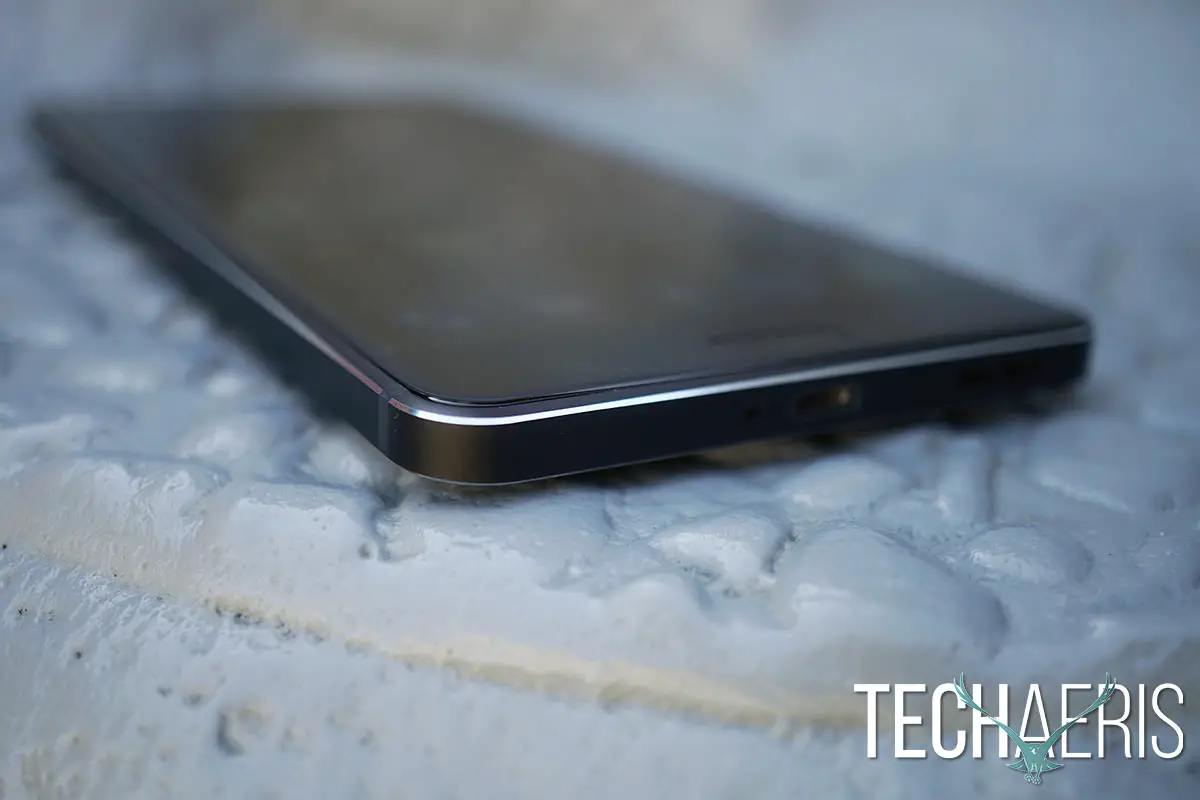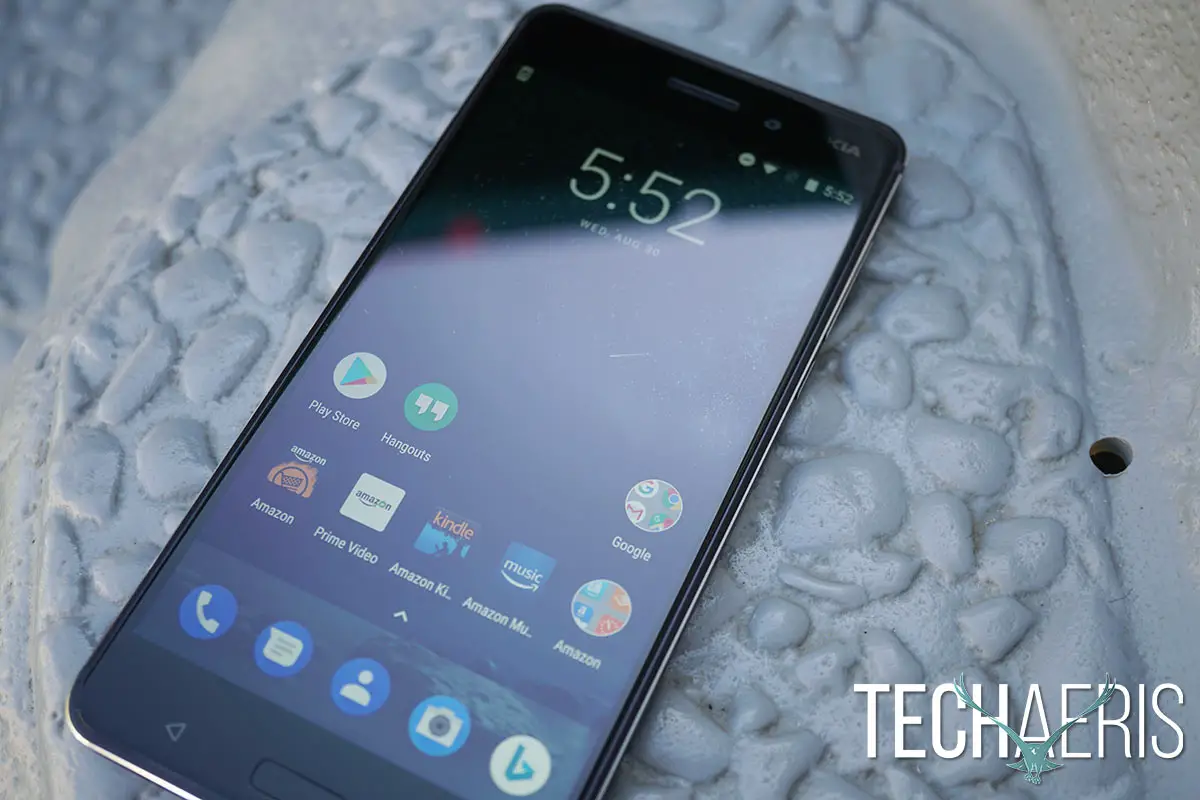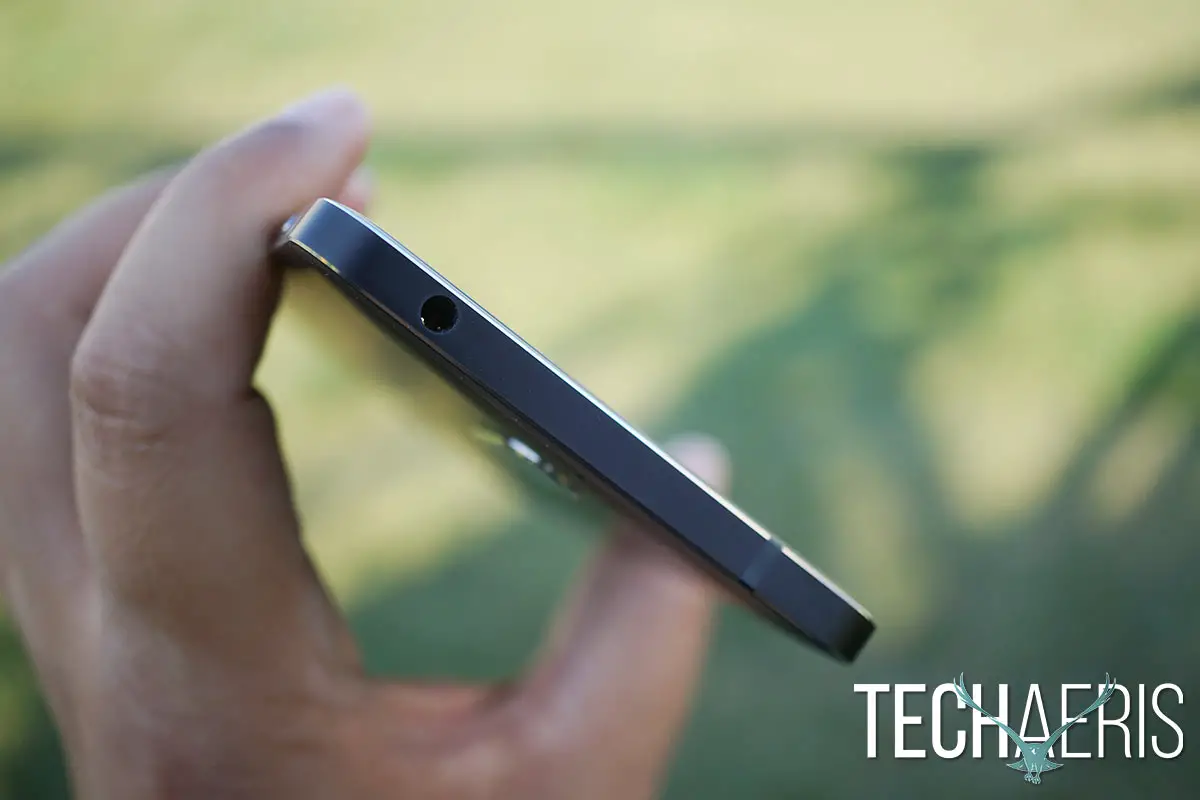 It's been a long while since we've seen a phone with Nokia branding on it but that day is finally here. The Nokia 6 Prime Edition is certainly not a flagship effort but it is an excellent low-budget smartphone. If you couldn't tell by the name, the Nokia 6 Prime Edition is an Amazon Prime phone. This means Amazon will be using the lockscreen as their own personal billboard, serving ads to you. For some, this may not be an ideal choice, for others, saving $50USD may be well worth it. Read on for our full review of the Nokia 6 Prime Edition .
It's been a long while since we've seen a phone with Nokia branding on it but that day is finally here. The Nokia 6 Prime Edition is certainly not a flagship effort but it is an excellent low-budget smartphone. If you couldn't tell by the name, the Nokia 6 Prime Edition is an Amazon Prime phone. This means Amazon will be using the lockscreen as their own personal billboard, serving ads to you. For some, this may not be an ideal choice, for others, saving $50USD may be well worth it. Read on for our full review of the Nokia 6 Prime Edition .
Specifications
The Nokia 6 Prime Edition has the following features and specifications:
Display: 5.5″ IPS LCD 1080×1920 HD with 403 ppi OS: Android 7.1.1 Nougat Memory: 32GB/64GB RAM: 3GB/4GB Chipset: Qualcomm MSM8937 Snapdragon 430 CPU: Octa-core 1.4 GHz Cortex-A53 GPU: Adreno 505 Front facing camera: 16 MP, f/2.0, phase detection autofocus, dual-LED (dual tone) flash, 1080p video 30fps Rear facing camera: 8 MP, f/2.0, autofocus, 1080p Battery: 3,000 mAh battery Sensors: Fingerprint sensor, Accelerometer, Gyro, Proximity, Compass/GPS Amazon special offers on lockscreen Dimensions: 154 x 75.8 x 7.9 mm (6.06 x 2.98 x 0.31 in) What's In The Box
Nokia 6 Prime Edition Wall wort MicroUSB cable for charging SIM removal tool Instructions, Documentation, and Warranty info Design
The first thing you notice when you unbox the Nokia 6 Prime Edition is its heft and solid feel in the hand. I am familiar with Nokia's legendary build quality but I wasn't expecting this level of quality on a budget phone. The entire body is constructed of metal and glass and it seriously feels solid, much like the Nexus 6P. The edges of the Nokia 6 are fairly sharp, not cut you sharp but they are not smooth rounded edges. Some may not like this but I like the feel in the hand, it gives you a bit of extra grip.
I will say that the metal back is a bit of a greasy fingerprint magnet. You never know just how dirty and greasy your hands get until you handle a phone like this. This isn't a deal breaker as many flagship phones also exhibit this same problem — iPhone 7 Plus anyone? The front glass is Corning Gorilla Glass 3 so it will offer up decent protection from minor scratches and falls. The iconic Nokia branding is on both front and back and it is subtle and not obtrusive, which is a nice touch.

Nice build quality!
Along the right edge of the Nokia 6 Prime Edition, you'll find the volume rocker and the power button. Both buttons are very tactile and offer up great feedback when operating them. I do wish the power button was textured so you could more easily differentiate the two. Along the left edge is the SIM card/SD card slot which can take up to a 256GB microSD card.
Along the bottom edge is the Micro-USB port for charging, the microphone, and the loudspeaker. Along the top edge of the Nokia 6 Prime Editon, you'll find the headphone jack. The front of the phone houses a slim fingerprint sensor on the bottom chin flanked by capacitive back and multitasking buttons. The top front of the phone houses the front facing camera and the ear piece.
Around the back of the phone, you'll find that 16MP camera along with the dual tone flash. Overall this design is really top notch and the build quality is just amazing. I didn't expect the phone to feel this nice for the $179USD price point. There's absolutely no flex in this phone, it's built like a tank.
Display
Nokia packed in a 1080p 5.5″ display on this phone and I've heard some reviewers complain it should have been better. Honestly though, for the price of this phone, a 1080p panel is just fine and it's actually really nice. Colors are more neutral and natural because this is an IPS display. If you're looking for the punchy colors of an AMOLED display you won't get them here. This display is more akin to what an iPhone display would look like.
Blacks are fairly deep and whites are pretty spot on but I did find that the screen didn't perform so well under bright sunlight. Honestly, even the iPhone screen has trouble in bright sunlight. The AMOLED screens on Samsung and other Android phones tend to fair better in bright sunlight.
So no, you're not getting a better than HD display here, but you are getting full 1080p which is still decent. There are phones out there in this price range that only offer 720p so I think this is a great screen for this phone. Overall you're going to get nice natural colors, good blacks, and whites and decent viewing angles here.
Software
The Nokia 6 Prime Edition ships with Android 7.1.1 Nougat and it's basically pure Android. Since this is the Amazon Prime version of this phone you will get a bunch of Amazon software bundled in with the phone. I am an Amazon Prime member so most of the software included is relevant to my needs so I found it useful to have included. If you're simply buying this phone for the $50USD price break, you may not like having the extras included. There's not much more to say about Android 7.1.1 as Google has made great improvements over the years and it remains a top notch OS.
The one area of software I wanted to touch on was the lockscreen ads. This was something I wasn't sure was going to annoy me or not. I have to say that I'm not really bothered by the Amazon ads on this device at all. I don't look at my lockscreen all too often so I don't stare at the advertisements for that long. The same ads also appear in the notification shade but again, swipe them away or ignore them.

Amazon apps included.
The one thing that does get annoying is the inability to use the fingerprint scanner to wake up your phone. Since Amazon wants you to look at the ad on your lockscreen, when you scan your fingerprint, it opens the lockscreen and you then have to scan your finger again to actually unlock the phone. It is a bit annoying but it is the price you pay for getting the device $50USD cheaper than the unlocked version. Some people may not mind this at all, I got used to it quickly and didn't mind. Others may find this very annoying and opt to just pay the extra money for the unlocked version.
Overall, the software here is nearly pure Android and it is a good experience. Your mileage may vary when it comes to Amazon apps and lockscreen ads, that's all going to be personal preference and how tolerant you are of those ads.
Performance
Our review unit was packing the Qualcomm Snapdragon 430, 3GB of RAM and the Adreno 505 GPU. This combo is will give you acceptable performance considering the price point here. Again, I've seen some reviewers being pretty hard on the Nokia 6 but price point does matter. I felt that some of the reviewers expected too much from this phone simply because it carries the Nokia name.
I will agree with others that the Nokia 6 Prime Edition did exhibit some janky behavior from time to time. Scrolling wasn't always smooth and there are some dropped frames in more intensive games. There were also some apps that took a bit of time to open, relative to other smartphones. But this is all to be expected considering the phone's budget price. I actually don't think users of this tier phone will notice all that much as they tend to get similar performance from the phones they've been using. Users that have used higher end phones will most likely notice simply because they're used to higher end performance.
Gaming is doable on the Nokia 6 with only the most graphic intense games really dropping any frames or getting laggy. Overall I believe the Nokia 6 performance is acceptable for the price point and specs that it has. If you're upgrading from an older budget phone, you should experience better performance with the Nokia 6.

Headphone jack, should you care.
Speakers/Sound
The Nokia 6 speakers are actually pretty decent, better than average. Most smartphone speakers aren't all that great and budget phone speakers even less. The Nokia 6 Prime Edition has Dolby Atmos and the sound is really not all bad. You're likely going to want headphones if you want great audio performance but for YouTube, games, and casual media consumption these speakers will do you fine.
Camera
I know I keep reminding you of this but it must be a constant reminder, this is a budget phone. Yes, I know we want to harp on the Nokia name meaning something but a budget phone is a budget phone no matter what name is on it. That being said, the Nokia 6 camera performs better than average for the price point it sits in.
First off, launching the camera takes a little longer than normal which was a bit annoying. You can miss shots if you're waiting for it to open. There's not a lot of options to play with like you'd get with a Galaxy or LG phone, which may actually be a good thing for some. Swimming through options can be a pain and sometimes confusing for some users. If you're looking for robust controls then you're better off downloading another camera app.
As far as photos go, the photos coming out of this sensor are sharp, slightly oversaturated, and really awesome in good lighting. It's not all roses and love though. While the photos do look great in good lighting, they sometimes suffer from blown out backgrounds. Low light photos are acceptable for the price point this phone sits in. Those low light photos will be grainy though. While the photos will look somewhat decent at first glance, any sort of zooming in will reveal high levels of noise and grain. Really not at all unexpected though and will probably be acceptable to those looking to buy this phone.
I don't like to compare one phone to another in a review so I won't name any names. I am currently testing another budget phone out that costs a bit more than the Nokia 6 Prime Edition and its camera is not as good as this one. Hopefully, that says something about how good the camera is given the price of the phone. Overall this is a really decent camera but it does suffer from laggy shutter and slow to open.
Reception/Call Quality
Reception and call quality were both top notch on the Nokia 6 Prime Edition. I had zero problems with them, callers were clear to me and I was clear to them. I used the phone on T-Mobile's network.
Battery Life
The 3,000 mAh battery lasted me all day which is from 5 am to 9 pm and I generally had about 15% left in the tank. That's with brightness to the max, Wi-Fi, Bluetooth, and GPS all turned on. Browsing, texting, social media, Apple Music, email, light gaming, and some multitasking are about my normal use case. If you plan on gaming very often, I'm sure the battery will drain faster, even high-end smartphones get their batteries crushed by gaming. Overall this is a good battery and should last you all day unless you're doing intensive things.
Price/Value
The Nokia 6 is priced at $229USD but since this is the Amazon Prime Edition, you're going to only be pay $179.99USD. For that price, this phone is a tremendous value and I'd highly recommend it to anyone looking for a budget device.
Wrap Up
Top notch Nokia build quality and a decent performer all the way around for the $179.99USD price tag. Lockscreen ads may bother some users but I found them easy to tune out. These ads also appear in the notification shade as well but are easy to swipe away, just be aware that there is no way to get rid of them. I would recommend this to those looking to spend less than $200USD on a smartphone.
*We were sent a review unit of the Nokia 6 Prime Edition for the purposes of this review.
Nokia 6 Prime Edition $179.99USD
9
Reception/Call Quality 10/10
Nailed it
Build quality is excellent at this price point Nice 1920x1080 display Android Nougat is basically stock Good battery life Good price and value Decent speakers Needs work
Some laggy performance Screen suffers in very bright conditions Fingerprint sensor is sort of gimped with lock screen ads Source:
Nokia 6 Prime Edition review: An excellent budget friendly smartphone
 It's been a long while since we've seen a phone with Nokia branding on it but that day is finally here. The Nokia 6 Prime Edition is certainly not a flagship effort but it is an excellent low-budget smartphone. If you couldn't tell by the name, the Nokia 6 Prime Edition is an Amazon Prime phone. This means Amazon will be using the lockscreen as their own personal billboard, serving ads to you. For some, this may not be an ideal choice, for others, saving $50USD may be well worth it. Read on for our full review of the Nokia 6 Prime Edition .
It's been a long while since we've seen a phone with Nokia branding on it but that day is finally here. The Nokia 6 Prime Edition is certainly not a flagship effort but it is an excellent low-budget smartphone. If you couldn't tell by the name, the Nokia 6 Prime Edition is an Amazon Prime phone. This means Amazon will be using the lockscreen as their own personal billboard, serving ads to you. For some, this may not be an ideal choice, for others, saving $50USD may be well worth it. Read on for our full review of the Nokia 6 Prime Edition .









 Render of the LG V30
Render of the LG V30  The iPhone 8 release date can be expected to fall on the second week of September. This is a very strong indication because the world's most valuable company in terms of market capital has a comprehensible annual launch cycle and release pattern of its iPhone lineup. In 2061 the iPhone 7 and iPhone 7 Plus was unveiled to the general public on September 7. In 2017, iPhone 6S and the supersized model was launched for the first time on September 9.
The iPhone 8 release date can be expected to fall on the second week of September. This is a very strong indication because the world's most valuable company in terms of market capital has a comprehensible annual launch cycle and release pattern of its iPhone lineup. In 2061 the iPhone 7 and iPhone 7 Plus was unveiled to the general public on September 7. In 2017, iPhone 6S and the supersized model was launched for the first time on September 9.








